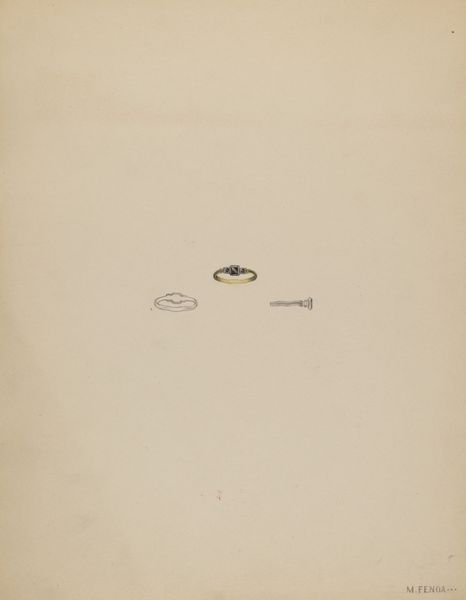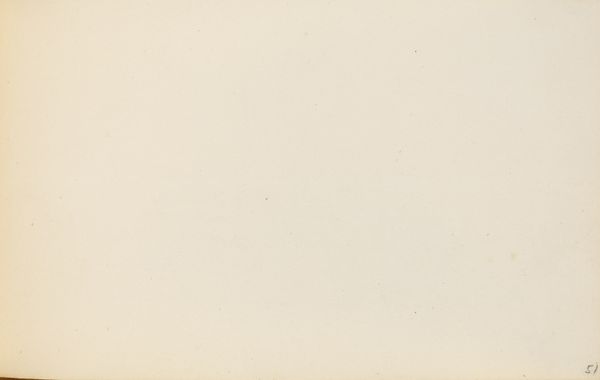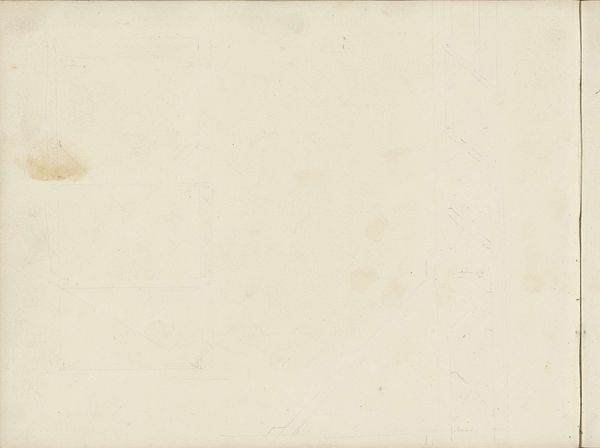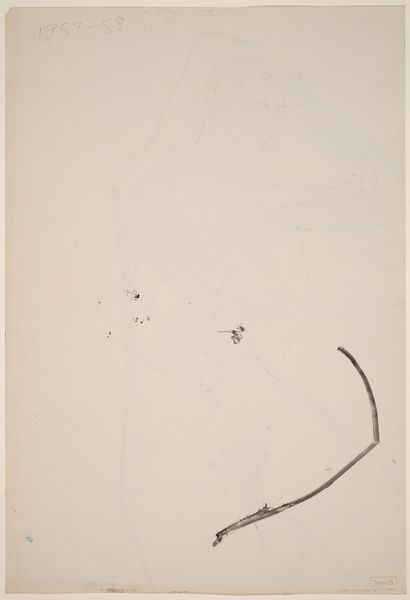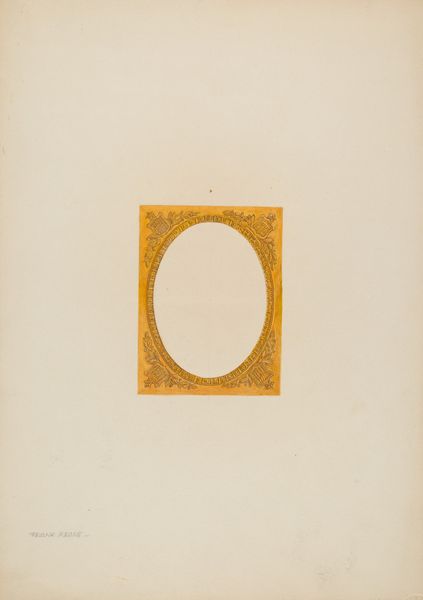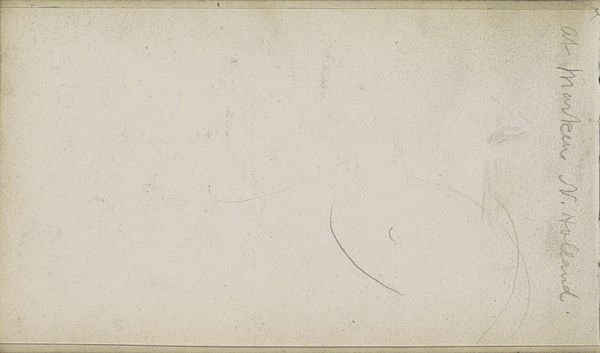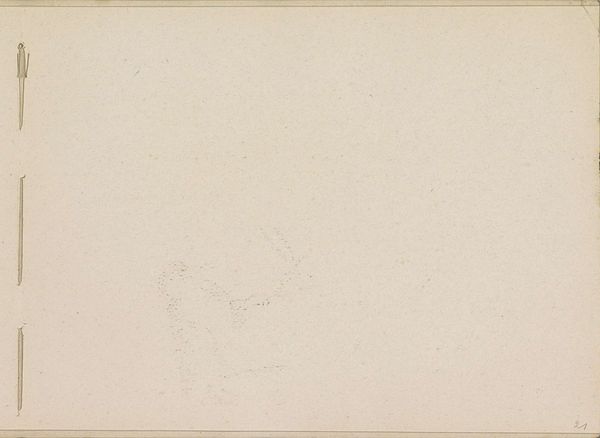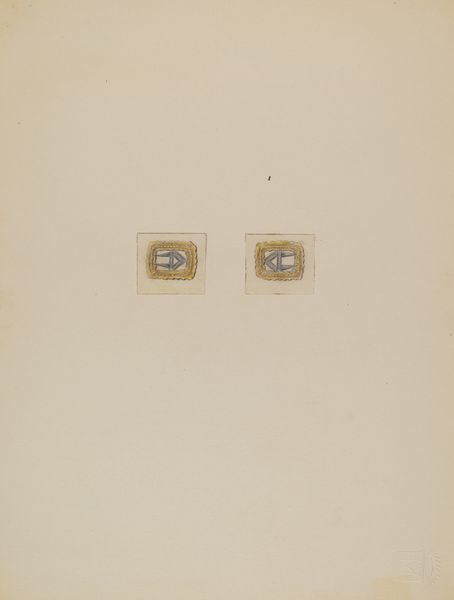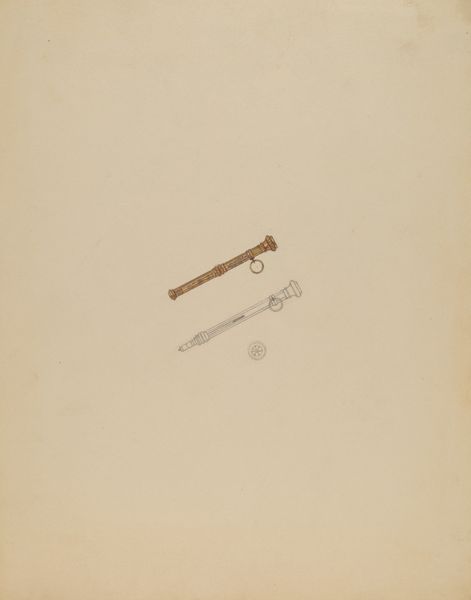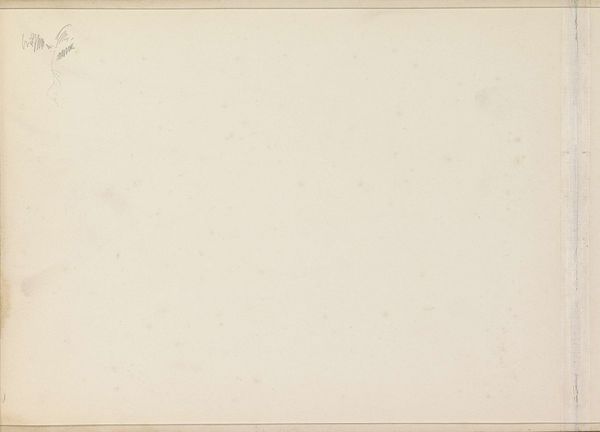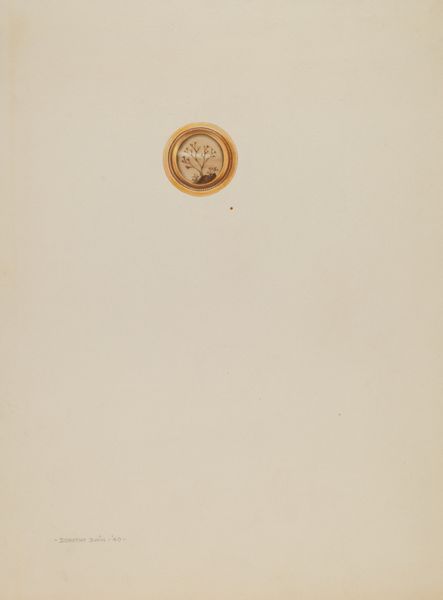
drawing, paper, watercolor, ink
#
drawing
#
water colours
#
paper
#
watercolor
#
ink
#
geometric
#
line
#
watercolour illustration
#
watercolor
Dimensions: overall: 29.3 x 22.9 cm (11 9/16 x 9 in.)
Copyright: National Gallery of Art: CC0 1.0
Editor: This is Isidore Steinberg's "Child's Earring," created around 1936, using ink and watercolor on paper. It’s a very simple composition; the earring and what looks like a guide line appear almost lost on the page. It’s so sparse, it makes me wonder, what was Steinberg trying to say with this? What do you see in this piece? Art Historian: What strikes me immediately is the artist's choice of subject and the socio-economic context of its creation. 1936... This was the height of the Great Depression. Jewelry, even a child's earring, takes on a different meaning. Is it a symbol of lost innocence, a reminder of former wealth, or perhaps even a hopeful emblem for a better future? Editor: That's a really interesting point. I hadn't considered the historical context. The Depression makes it much more poignant. Do you think the medium itself, watercolor and ink, speaks to that? Art Historian: Absolutely. Watercolors, particularly, can evoke fragility and a sense of fleeting beauty, while ink provides definition. But what about the starkness? The almost clinical presentation of the object? How might that influence our perception of value, both material and emotional, especially within that specific historical moment? Does it, in some ways, flatten out the importance or emphasize its existence? Editor: It almost feels like a catalog entry… very matter-of-fact despite the underlying emotions we've discussed. It feels detached and kind of sad to me now. Art Historian: Precisely! The "public" role of art is engaged here, inviting the viewer to negotiate the politics of this imagery: memory, wealth, loss. It causes one to ask, where was this displayed? Editor: Wow, I hadn't thought about it like that at all. It seemed so simple at first glance. Thank you for offering a historical context. It's made me see the piece, and its potential impact, completely differently! Art Historian: My pleasure. It’s crucial to remember art exists within complex frameworks that profoundly shape our interpretation. The artist's role, as shaped by their society. Hopefully that brings it to life in a modern viewing.
Comments
No comments
Be the first to comment and join the conversation on the ultimate creative platform.

